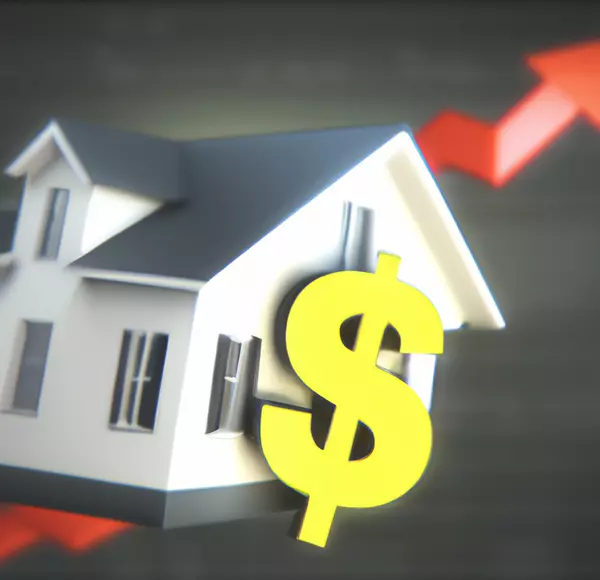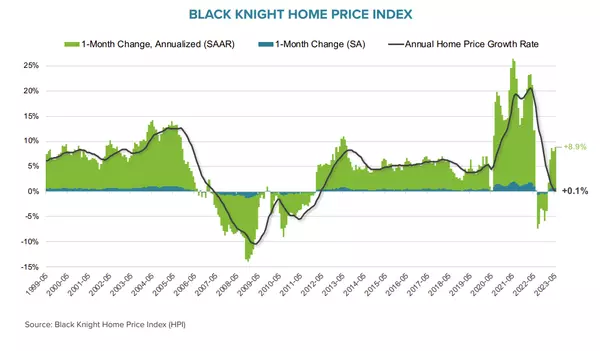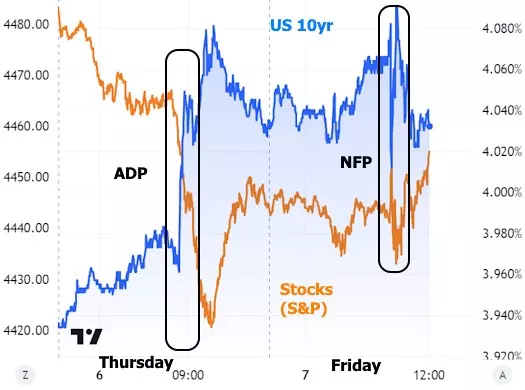Upscale Bowling Lanes Roll Into Long Branch Pier Village
Upscale Bowling Lanes Roll Into New Jersey Shore’s Pier Village
Kushner Adds Upscale Sports-Focused Entertainment Venue to Mixed-Use Development It Acquired in 2014
Pier Pins will feature four full-sized bowling lanes. (Kushner Cos.)
Pier Village, a mixed-use complex on the New Je
Buyer Traffic Is Still Stronger than the Norm
Buyer Traffic Is Still Stronger than the Norm
Are you putting off selling your house because you’re worried no one’s buying because of where mortgage rates are? If so, know this: the latest data shows plenty of buyers are still out there, and they’re purchasing homes today. Here’s the data to prove
People Are Moving, But Where & Why?
Where Are People Moving Today and Why?
Plenty of people are still moving these days. And if you’re thinking of making a move yourself, you may be considering the inventory and affordability challenges in the housing market and wondering what you can do to help offset those. A new report from Gravy
The Value of an Agent When Buying Your New Construction Home
The Value of an Agent When Buying Your New Construction Home
Buying a new construction home can be an exciting experience. From being the very first owner, to customizing your home’s features, there are a lot of benefits. But navigating the complexities of buying a home that’s under construction ca
Home prices continue to climb with ‘striking’ regional differences
Home prices continue to climb with ‘striking’ regional differences, says S&P Case-Shiller
Prices nationally rose 0.7% month to month, seasonally adjusted.
The index’s 10-city composite fell 1%, year over year, slightly less than the 1.1% decrease in the previous month.
The 20-city composite d
Shocking Headlines About Home Prices - Don't Fall For It
Don’t Fall for the Next Shocking Headlines About Home Prices
If you’re thinking of buying or selling a home, one of the biggest questions you have right now is probably: what’s happening with home prices? And it’s no surprise you don’t have the clarity you need on that topic. Part of the issue is h
The "Slow" Housing Market's Questionable Excuse
30YR Fixed
6.98%
-0.02%
15YR Fixed
6.35%
-0.02%
Slow Housing Market's Questionable Excuse (And a Much Better Alternative)
Inventory! That's been a buzzword for the housing market for more than a decade, but it's been especially pr
Rent Increases Return to Pre-Covid Levels
30YR Fixed
6.88%
-0.02%
15YR Fixed
6.30%
-0.01%
Rent Increases Return to Pre-Covid Levels
Increases in single-family rents soared in the post-pandemic environment but have now moderated to the annual levels in the pre-pandemic yea
Explaining Today’s Mortgage Rates
Explaining Today’s Mortgage Rates
If you’re following mortgage rates because you know they impact your borrowing costs, you may be wondering what the future holds for them. Unfortunately, there’s no easy way to answer that question because mortgage rates are notoriously hard to forecast.
But, the
Two Questions To Ask Yourself if You’re Considering Buying a Home
Two Questions To Ask Yourself if You’re Considering Buying a Home
If you’re thinking of buying a home, chances are you’re paying attention to just about everything you hear about the housing market. And you’re getting your information from a variety of channels: the news, social media, your real es
Home Prices Hit New Peaks Despite Affordability Issues
30YR Fixed
6.96%
-0.13%
15YR Fixed
6.38%
-0.04%
Home Prices Hit New Peaks Despite Affordability Issues
The Black Knight Mortgage Monitor for May doesn’t even hint at a housing crisis on the horizon. Affordability is again (or ma
Mortgage Rates Back Over 7% as Markets Digest Economic Data
30YR Fixed
7.14%
-0.08%
15YR Fixed
6.50%
-0.15%
Mortgage Rates Back Over 7% as Markets Digest Economic Data
Until a few weeks ago, it looked like we might have seen the last of 7% mortgage rates, but the last 2 weeks have been brutal. The
Today’s Housing Inventory Is a Sweet Spot for Sellers
Today’s Housing Inventory Is a Sweet Spot for Sellers
One of the biggest challenges in the housing market right now is how few homes there are for sale compared to the number of people who want to buy them. To help emphasize just how limited housing inventory still is, let’s take a look at the late
Mortgage Rates Jumped Over 7% This Week, Even if You Heard They Were 6.71%
30YR Fixed
7.02%
-0.02%
15YR Fixed
6.42%
-0.03%
Mortgage Rates Jumped Over 7% This Week, Even if You Heard They Were 6.71%
Mortgage rates have been hovering in the high 6's for weeks, but they broke above 7% on Thursday. At the sa
April Home Prices Bolster Case for Recovery
30YR Fixed
6.91%
-0.01%
15YR Fixed
6.32%
+0.00%
April Home Prices Bolster Case for Recovery
Both the S&P CoreLogic Case-Shiller U.S. National Home Price Index and the Federal Housing Finance Agency’s (FHFA’s) Home Price Index (HPI
Do homes with solar panels sell for more than comparable homes without panels?
Do homes with solar panels sell for more than comparable homes without panels?
Caption
Yes, homes with owned solar panels typically sell for more than comparable homes without panels. According to a study by Zillow, homes with solar panels sell for an average of 4.1% more than comparable homes
The True Cost of Selling Your House on Your Own
The True Cost of Selling Your House on Your Own
Selling your house is no simple task. While some homeowners opt to sell their homes on their own, known as a FSBO (For Sale by Owner), they often encounter various challenges without the guidance of a real estate agent. If you’re currently considering
Energy-Efficient / Eco-Friendly Homes Attract Buyers
Eco-Friendly, Energy-Efficient Homes Attract Buyers
Smart Home Features - Add Value to Homes
Are you planning to sell your house? If so, you may be surprised to hear just how much buyers value energy efficiency and eco-friendly features today. This is especially true as summer officially kicks o
2 Ways to Lok at Existing Home Sales
30YR Fixed
6.95%
+0.05%
15YR Fixed
6.32%
+0.04%
Two Ways to Look at Existing Home Sales
The reality of the home sales market is in the eye of the beholder these days and the just-released Existing Home Sales report doesn't shed much light.
What Homebuyers Need To Know About Credit Scores
What Homebuyers Need To Know About Credit Scores
If you’re thinking about buying a home, you should know your credit score’s a critical piece of the puzzle when it comes to qualifying for a home loan. Lenders review your credit to assess your ability to make payments on time, to pay back debts, and

Ryan Skove, ABR, SRS
Phone:+1(732) 365-0265




















